Comparison of rice and potatoes: which is healthier and higher in calories
There are many myths surrounding rice and potatoes regarding their dietary properties. Proponents of proper nutrition calculate the calorie content of rice and potatoes in order to better organize or change their diet.
Let’s figure out whether it’s worth giving up potatoes in favor of a rice side dish, and we’ll tell you what’s healthier – rice or potatoes.
Chemical composition and trace elements
A set of vitamins, macro- and microelements, acids determines the properties of the product and its nutritional value.
Rice
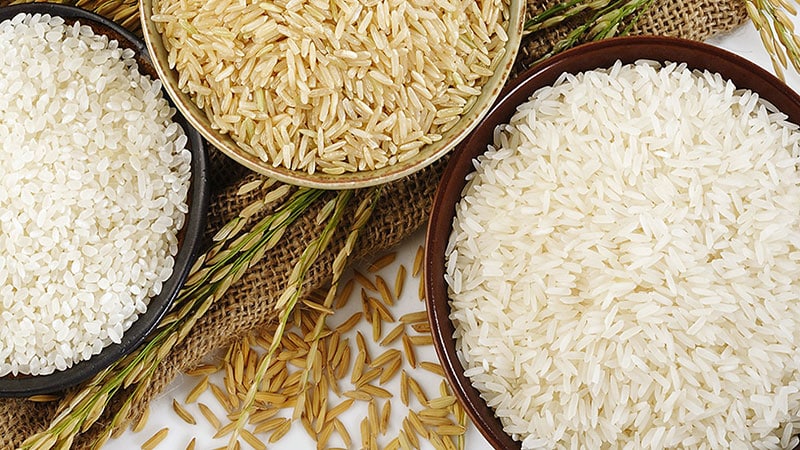
The mineral composition of the product includes:
- potassium – 86 mg;
- phosphorus – 10 mg;
- magnesium – 35 mg.
100 g of rice satisfies the body’s daily requirement for manganese by 48%, copper by 12%, and zinc by 10.5%.
The cereal does not contain fat-soluble vitamins. But it is rich in water-soluble B vitamins (B1, B2, B5, B6) and PP.
Reference. Rice bran leads among other products in the content of thiamine (B1), pyridoxine (B6) and niacin (B3 or PP). There is more pantothenic acid (B5) only in shiitake mushrooms, chicken yolk and liver.
Potato
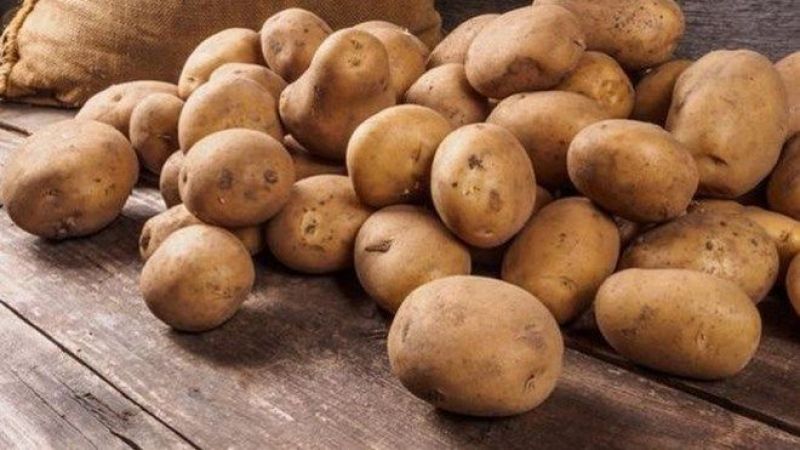
Raw potatoes contain the most of the following minerals and trace elements:
- potassium – 568 mg;
- phosphorus – 58 mg;
- chlorine – 58 mg;
- silicon – 50 mg;
- sulfur – 32 mg;
- magnesium – 23 mg.
The main vitamin is ascorbic acid. To satisfy the daily need for vitamin C, 200-300 g of the product is enough. Potatoes also contain B vitamins, PP and choline.Yellow-fleshed tubers contain carotenoids that act as provitamin A.
Among the organic acids present in potatoes are citric, oxalic and malic.
Calorie content and dietary fat, glycemic index
The calorie content and nutritional value of these products depend on several factors: variety, method of preparation. Let's compare the calorie content of potatoes and rice and other nutritional values.
Different types of rice
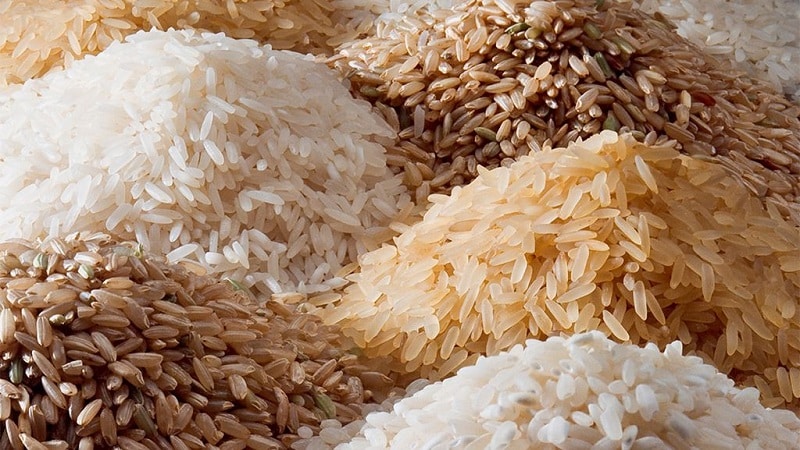
There are red, brown (brown), wild (black) and white rice:
- White - the most popular. It is smooth and even due to grinding and the absence of a bran shell. This treatment improves the taste of the grain, extends the shelf life and speeds up the cooking process. But polished grains lose a number of useful properties.
- Burym called rice unpeeled from the grain chaff. This shell contains most of the nutrients.
- Called "red" hiding two varieties of cereal: Bhutanese red and white rice, fermented by fungi of the genus Monascus. The latter is used as a coloring agent in the production of sausages. Bhutanese rice is semi-polished, meaning it retains a small part of the grain shell. The historical homeland of this species is Iran, but it is also well grown in the Krasnodar region.
- Wild rice, it is also black, in botany it is called “water tsitsaniya”. This annual marsh plant of the Poaceae family is native to North America. It has a sweetish, nutty taste and is highly valued in the market.
The energy and nutritional value of different types of rice is presented in the table.
| Type of rice | White | Brown | Red | Wild |
| Energy value, kcal | 360-370 | 337 | 362 | 101 |
| Proteins, g | 7 | 7 | 10,5 | 16 |
| Fats, g | 1 | 2 | 2,5 | 3 |
| Carbohydrates, g | 80 | 73 | 70,5 | 79 |
| Glycemic index | 85 | 55-60 | 55 | 45-50 |
The calorie content of rice directly depends on the degree of processing of the grain, so wild black rice has the lowest energy value. White and red rice are almost the same in terms of calories, but completely polishing white rice reduces its protein and fat content while simultaneously increasing its carbohydrate levels and glycemic index.
Potato
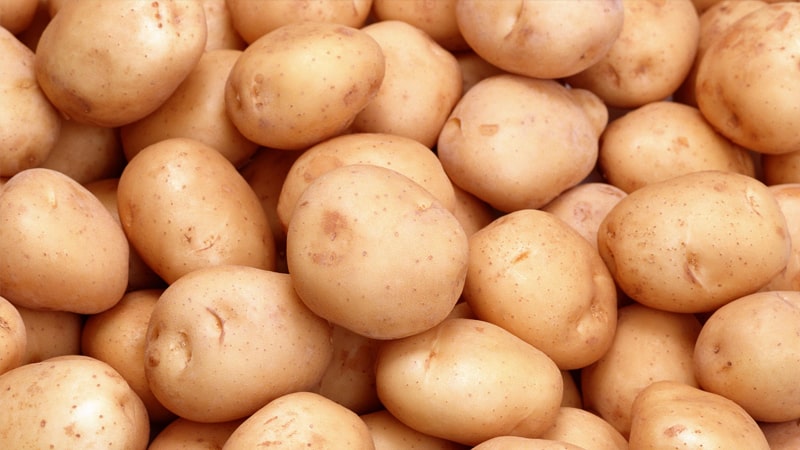
Myths about the dangers of potatoes for the figure are associated with a variety of dishes, where this vegetable is generously flavored with butter and milk, and is used as a side dish for fatty fish or meat.
But the calorie content of raw potatoes is only 75 kcal per 100 g. But the balance of nutrients (proteins - 2 g, fats - 0.4 g, carbohydrates - 17 g) makes us wary, because there is a predominance of carbohydrates, incl. including simple ones.
The change in the energy and nutritional value of the product during heat treatment is reflected in the table.
| Cooking method | Boiled peeled | Boiled in peel | Fried | Baked |
| Energy value, kcal | 86 | 78 | 203 | 115 |
| Proteins, g | 2 | 3 | 4 | 6 |
| Fats, g | 0,1 | 0,1 | 10,6 | 13 |
| Carbohydrates, g | 18,2 | 14 | 25 | 19 |
| Glycemic index | 70 | 65 | 95 | 95 |
Jacket potatoes have the lowest calorie content. Tubers boiled in their skins not only contain fewer carbohydrates, but also retain a significant portion of minerals and vitamins. Calorie content fried potatoes associated with the use of fats - vegetable or animal - during cooking.
Attention! The most harmful dishes are French fries (350 kcal) and chips (from 400 to 520 kcal).
What has more calories - rice or potatoes?
When choosing between potatoes and rice, consider the type of cereal and the method of preparing the vegetable. Polished rice porridge contains more calories (140) than boiled tubers (78). The glycemic index also does not favor rice.
But brown, red, and especially wild rice are healthier substitutes for potato side dishes, since these types contain slow-acting carbohydrates, fill you up for a longer period of time, and do not cause a spike in blood sugar.
Beneficial properties for the body
In moderation, rice and potatoes are beneficial for the body, and their rich composition allows them to be used for medicinal purposes.
Rice
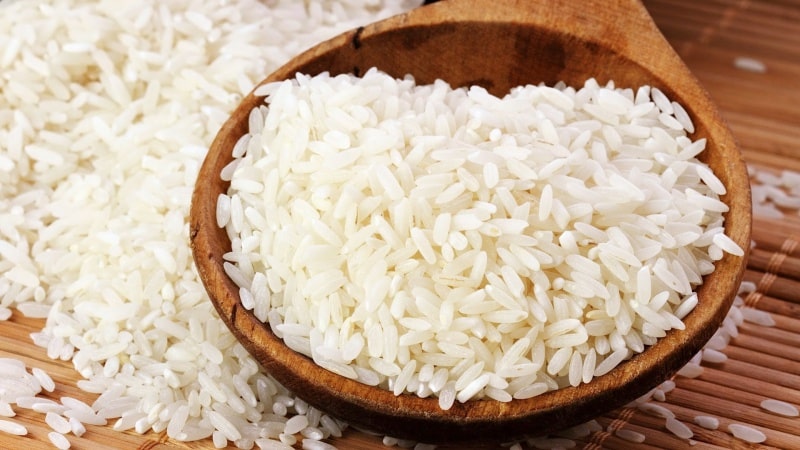
The benefits of rice are due to its chemical composition:
- the grains do not contain gluten (gluten), so the product is suitable for those who suffer from allergies, including it is used as complementary food for infants, used in the diet of patients with celiac disease and transient deficiency of digestive enzymes;
- potassium is good for the cardiovascular system, helps get rid of edema, phlegm in the lungs and bronchi and salt deposits in the joints;
- manganese prevents the development of osteoporosis;
- phosphorus is essential for bone health;
- folic acid (vitamin B9) is especially useful for women - it helps fight stress and is necessary for the normal development of the fetus during pregnancy;
- nicotinic acid is involved in lipid and carbohydrate metabolism (to improve its absorption, it is recommended to soak rice in cold water before cooking);
- brown, wild black rice and rice bran are rich in fiber, which cleanses the body of harmful toxins and waste, helps with constipation;
- Anthocyanins, which are responsible for the color in red rice, are powerful antioxidants that help prevent cancer.
Has medicinal and cosmetic properties rice water:
- envelops and protects the walls of the esophagus, stomach and intestines from irritation;
- used as a natural hair conditioner;
- Rice flour masks cleanse the skin.
Potato
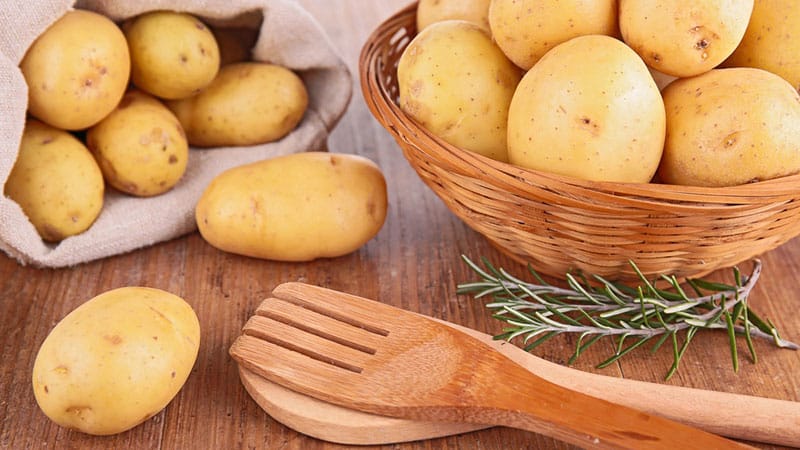
Potato starch, like rice water, is an enveloping agent, so it is used after poisoning orally (in the form of jelly) or as an enema.
Freshly squeezed juice neutralizes the effects of acids, relieving heartburn and helps in the treatment of gastritis, gastric and duodenal ulcers. Starch lowers blood cholesterol levels.
In folk medicine, the use of potatoes is varied:
- raw potato gruel is used for burns and eczema;
- steam inhalations help with diseases of the upper respiratory tract;
- mashed hot tubers wrapped in cloth serve as a warming compress.
In home cosmetology, raw tubers help fight dark circles under the eyes, and masks with potato juice relieve acne.
Harm and possible contraindications for use
Potatoes and rice have a number of contraindications. Their common disadvantage is their high starch content. Its components are amylopectin and amylose - glucose chains. This makes the foods dangerous for diabetics as they can cause a spike in blood sugar.
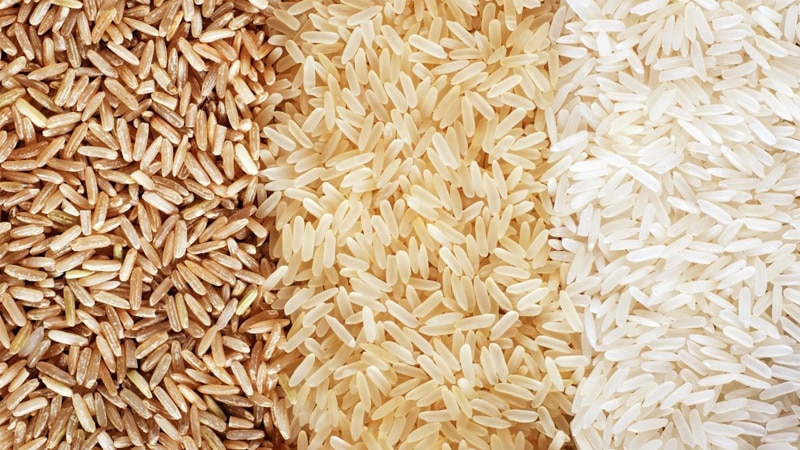
Possible harm of rice:
- Rice porridge slows down intestinal motility and can cause constipation.
- Wild rice can be contaminated with ergot and cause severe poisoning.
- There is concern about the use of arsenic as a pesticide in red rice. Therefore, you need to pay attention to the presence of toxicological control over grain. This information must be included on the product packaging.
The greatest danger that potatoes can pose is the toxic substance solanine. Normally, it is present in the product in small quantities, but under the influence of direct sunlight or when sprouts appear, its concentration increases. Outwardly, this manifests itself as green spots on the tubers. Solanine in a dose of 20 mg leads to mild poisoning, 200-400 mg - to death.
Fried potatoes, french fries, and chips can be cooked in low-quality oil that has high levels of carcinogens. The high calorie content of these dishes makes them dangerous for overweight people.
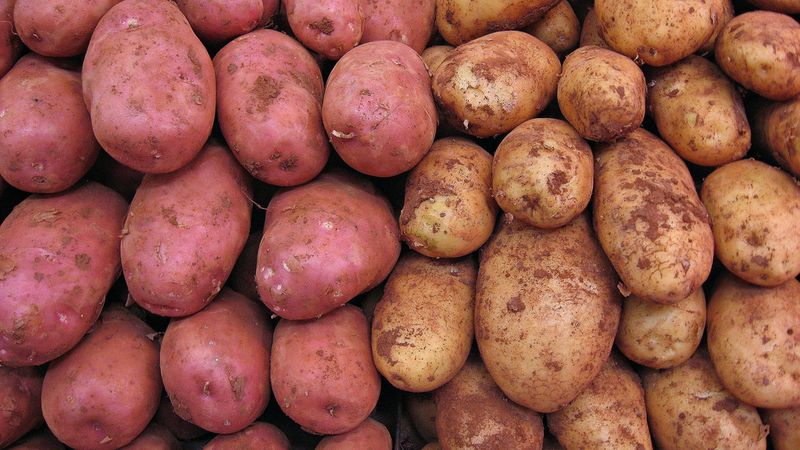
Nutritionist opinion
Among those who want to lose a couple of extra pounds in a short time, the rice mono-diet is popular. Adherents of such nutrition refer to the fact that in boiled rice loses calorie content several times, and rice porridge contains only 140 kcal, instead of 370 in dry grain.
An attractive factor is its low fat content (virtually no fat), so rice is often used by athletes during the so-called “cutting” - losing fat mass.
Reference. To avoid problems with constipation, the rice diet is combined with plenty of liquid, vegetables and fruits. Water and fiber promote intestinal contractions.
But polished grain is a source of fast carbohydrates. White rice has a high glycemic index, and weight loss on such a diet occurs only due to a decrease in total calories.
A healthier way to lose weight is to include red in your diet. brown or black rice The high fiber content makes these cereals indispensable in the diet of overweight people.
Important! Adherents of a vegan diet should not be deluded by the high protein content, because it is incomplete - it lacks two amino acids: asparagine and glutamine.Therefore, it is recommended to combine wild rice with legumes, nuts or seeds.
As for potatoes, this product is undeservedly included in the ranks of the main enemies of a slim figure. In boiled form, especially in their skins, potatoes are no more nutritious than other side dishes. The best addition to potatoes is a light vegetable salad and fresh herbs, which will balance the high starch content in the tubers.
Conclusion
Both potatoes and rice have their supporters and opponents. The choice of one product or another depends on the gastronomic preferences of each person. The objective differences between potatoes and the most common white rice are not so significant.
It all depends on the method of preparation and the addition of other ingredients - butter, full-fat milk, salt and artificial flavor enhancers. The healthiest alternatives are minimally processed rice varieties such as brown and wild black.